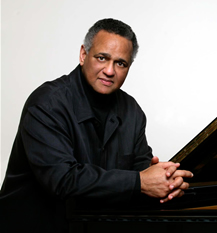The Music and Museum series at the Bechtler Museum of Art presented a fine program of music ranging from Hadyn to Tchaikovsky. The musicians, students and artist faculty from the Heifetz International Music Institute at Mary Baldwin College (with which artistic director Benjamin Roe is now involved), played with maturity and connected with the audience through thoughtful introductions to each piece. This series smartly presents a lunchtime program at noon and an early evening show at 6:00 p.m. They are always under 90 minutes and as always the audience is encouraged to enjoy the surrounding art.
About 20 people came to the noon performance, a modest number, but the audience was warm and engaged. Roe provided introductions that explained the music and its relationship to art. Literature, art, and music have always played a cat-and-mouse game when it comes to aesthetic movements, Roe pointed out. Art influences other art, often to be revisited centuries later. Many of the pieces on this program are examples of older styles revisited by more modern composers, bringing an interesting and refreshing interpretation of their forms.
Madison Vest, violin, Kevin Mills, cello, and Carlos Avila, piano, started the program with the last movement of a piano trio by Haydn. Like visual artists, composers often survive because of patronage from wealthy benefactors. Roe explained that Haydn had recently lost his chief benefactor, Esterhazy, and had moved to London, where he became a celebrity. This trio, No. 39, in G, was dedicated to a woman with whom Haydn exchanged over 45 letters, a Mrs. Schroeter. The presto movement, “Rondo all’ Ongarse,” was lively and fun, as Haydn tends to be. In that space, Avila and Mills took a bit of time figuring out the balance and articulation needed, both being a bit heavy handed for the loud, open room.
Vest proceeded with a beautiful melody, aptly named “Melodie,” arranged by Fritz Kreisler from Gluck’s opera Orfeo and Euridice. She sweetly spoke about the Greek story behind the opera: the piece represents the anguish Orfeo experiences after his fatal look back to Euridice, condemning her to remain in hell. Vest played with so much feeling that she turned her violin slightly away from the audience at times and we periodically lost her sound.
The strings followed with a piece commonly referred to as the Handel-Halvorson duet, an arrangement by Johan Halverson of a passacaglia (with a repeating bass line) from one of Handel’s harpsichord concertos. Written for violin and viola, the duet is commonly played by violin and cello, as it was here. It’s a typical showpiece consisting of variations employing various advanced string techniques; Mills and Vest played enthusiastically and with a lot of technical flair. My favorite part was close to the end, during the variation wherein each player passes off a fast, ricocheted figure, throwing the bow on the string in such a controlled way that it bounces horizontally across the string. Each player egged the other on in this section, turning it into a battle of flash and bringing something new to an overplayed piece.
Mills soloed next with the “Rococo Variations” by Tchaikovsky. This piece was my favorite of the program. The cellist played with technical and musical grace, and the balance with the pianist was excellent. Mills stunningly played the lush melodic lines, Tchaikovsky’s specialty.
The afternoon ended with the famous “Archduke” Trio, Op. 97, by Beethoven. I loved hearing this young trio tackle such a monstrous and mature piece. Students often bring great freshness to established traditions. While I was slightly bored by their repetitive phrasing and lack of any vibrato variation in the strings, I appreciated their attention to the detail of this masterpiece and will look forward to hearing the risks that they will take with it in the future.











